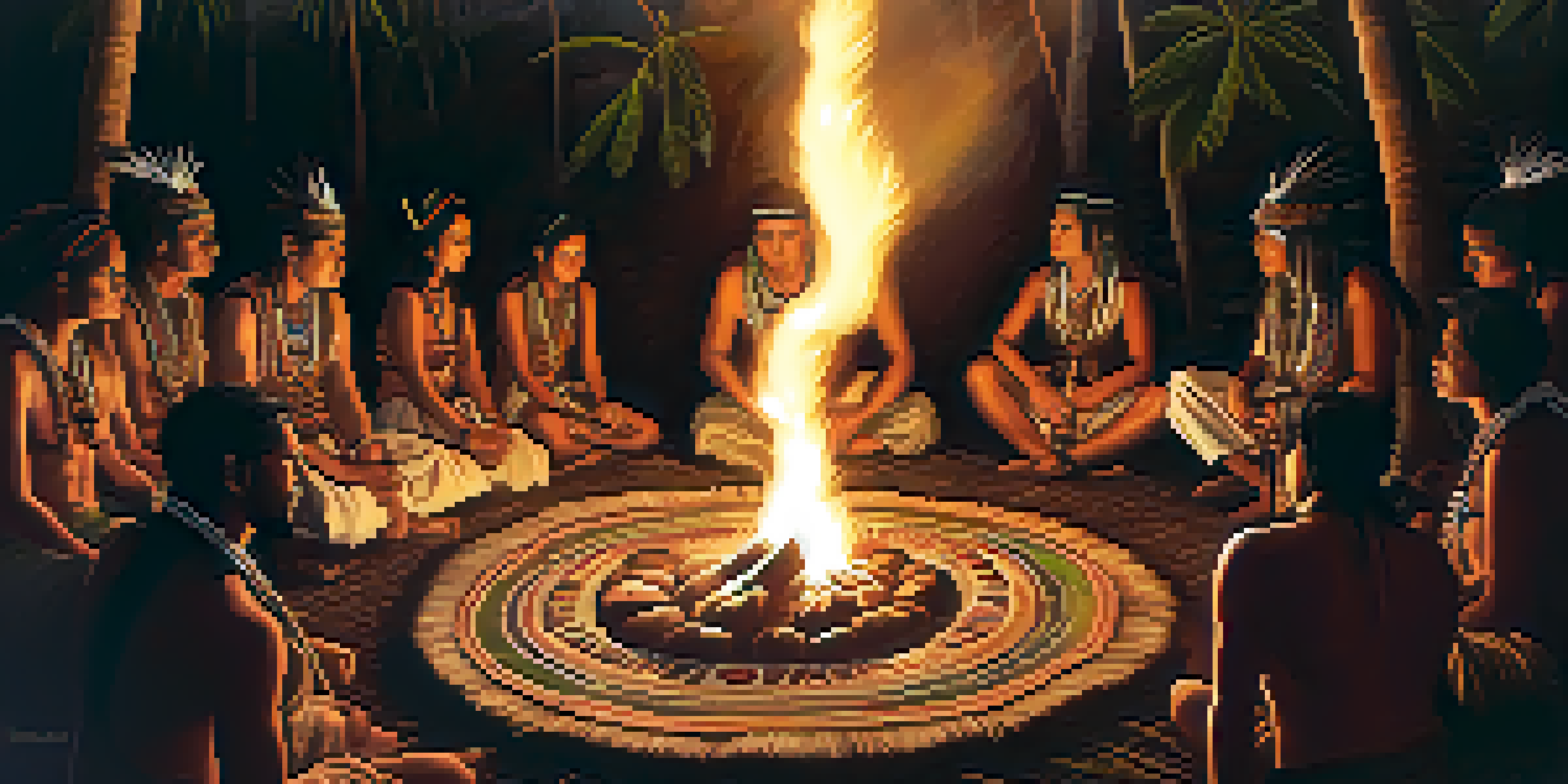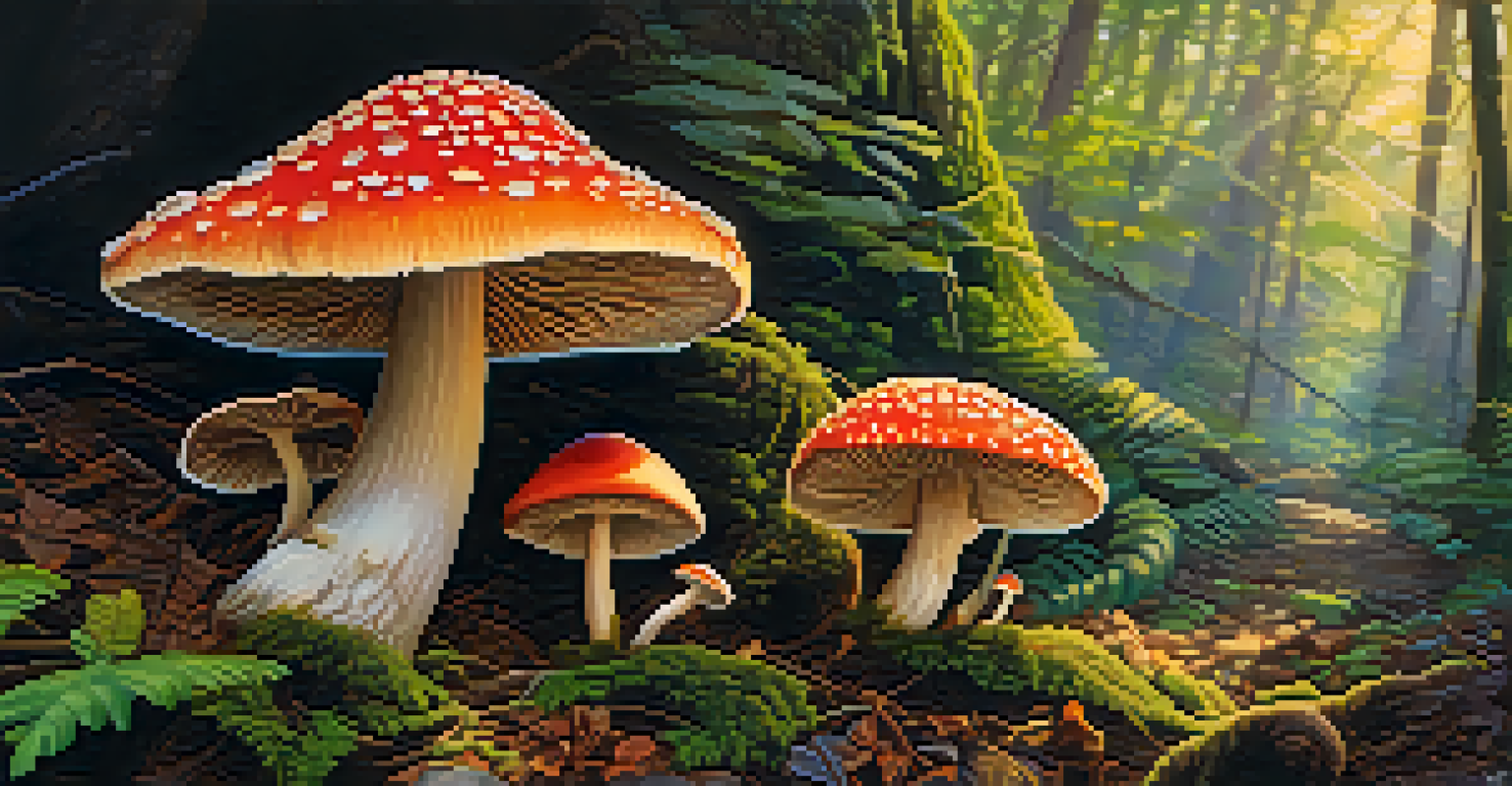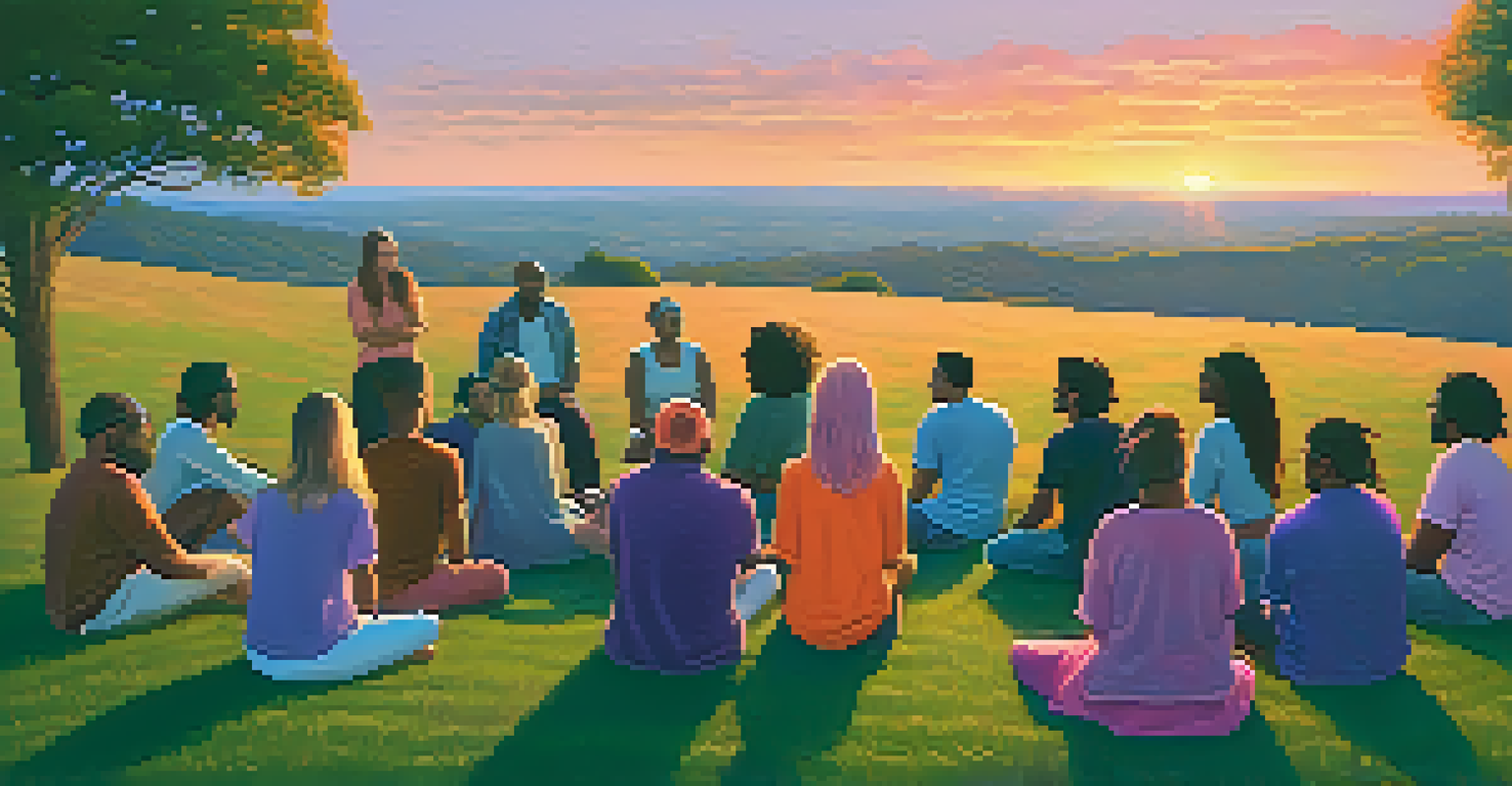The Influence of Culture on Entheogen Experiences

Understanding Entheogens and Their Cultural Significance
Entheogens are substances, often derived from plants, that are used in spiritual or religious contexts to induce altered states of consciousness. These experiences can be profoundly transformative, and their significance often varies across different cultures. For instance, in some Indigenous traditions, entheogens are seen as sacred tools for healing or connecting with the divine, while in other contexts, they might be viewed more recreationally.
The use of entheogens in a ritual context can transform the experience into a journey of self-discovery and healing.
The role of culture cannot be overstated when it comes to how these substances are perceived and utilized. In cultures where nature and spirituality are intertwined, entheogens are often integrated into rituals and ceremonies. This relationship fosters a deep respect for the substances and an understanding of their potential benefits and risks.
As we dive deeper into the influence of culture, it becomes clear that the narratives surrounding entheogens shape not only how they are used but also how individuals relate to their experiences. This cultural lens can enhance or diminish the overall impact of the entheogen experience, making it essential to consider.
Rituals and Ceremonies: A Cultural Framework for Use
Rituals play a crucial role in many cultures that utilize entheogens. They provide a structured environment for individuals to explore their consciousness while feeling safe and supported. For example, in Amazonian shamanic traditions, the use of ayahuasca is often accompanied by songs, prayers, and communal gatherings that create a sacred atmosphere.

These rituals not only enhance the experience but also help participants integrate their insights afterward. By framing the experience within a cultural context, individuals are better able to understand and interpret their journeys. This cultural framing can help mitigate feelings of anxiety or confusion that may arise during the experience.
Entheogens and Cultural Context
Entheogens are deeply rooted in cultural traditions, where their usage and interpretation vary significantly across different societies.
Moreover, the communal aspect of these rituals fosters a sense of belonging and shared understanding. Participants often report feeling a deep connection to others and the universe, which can amplify the transformative potential of the entheogen experience.
Cultural Variations in Entheogen Usage and Interpretation
Different cultures approach entheogens in unique ways, from the substances chosen to the methods of ingestion. For instance, some cultures may prefer psychedelic mushrooms, while others might utilize peyote or psilocybin. These choices are often deeply rooted in cultural history, mythology, and geography.
Understanding the cultural context of psychedelics not only enriches the experience but also honors the traditions and wisdom of those who have used them for centuries.
The interpretation of experiences also varies widely. In some cultures, visions and insights gained during the experience are viewed as messages from ancestors or spirits, leading to profound personal revelations. In contrast, other cultures might emphasize the psychological benefits, such as increased creativity or emotional healing.
Understanding these variations helps to illustrate how culture shapes not just the experience itself, but also the narrative surrounding it. By exploring these diverse perspectives, we can appreciate the rich tapestry of human experience related to entheogens.
The Role of Language in Shaping Entheogen Experiences
Language is a powerful tool that shapes our perceptions and experiences, including those induced by entheogens. The words and narratives we use to describe our experiences can influence how we process and integrate them. In cultures with rich vocabularies for altered states, individuals may be better equipped to articulate their experiences.
For example, Indigenous languages may have specific terms that encapsulate the nuances of spiritual journeys, allowing for deeper understanding and communication. In contrast, a lack of vocabulary in other cultures may lead to feelings of isolation or confusion following the experience.
Rituals Enhance Experience
Rituals surrounding entheogen use provide a structured environment that enhances participants' understanding and integration of their experiences.
Additionally, the stories shared within a culture can create a communal framework for understanding entheogen experiences. By sharing narratives, individuals can find meaning in their journeys and feel a sense of connection to their cultural heritage.
Modern Western Perspectives on Entheogens and Culture
In recent years, the Western world has seen a resurgence of interest in entheogens, often divorced from their traditional cultural contexts. This trend raises questions about the ethical implications of using these substances without the accompanying rituals and community support that are integral to their cultural roots. Many advocates argue for a respectful approach that honors the original cultures and their practices.
The commercialization of entheogens in popular wellness movements can sometimes lead to a superficial understanding of their significance. It's crucial for individuals exploring these substances to educate themselves about their histories and the cultures that have used them for centuries.
This awareness encourages a more respectful and informed approach, allowing individuals to engage with entheogens in a way that honors their transformative potential while acknowledging their cultural significance.
Integration: Bridging Experiences with Cultural Understanding
Integration is the process of making sense of and incorporating insights gained from entheogen experiences into everyday life. This process can be significantly influenced by cultural background and community support. For instance, individuals from cultures with established practices for integration may find it easier to translate their experiences into meaningful actions.
Conversely, those without such support may struggle with feelings of disconnection or confusion. Therefore, understanding the cultural context of entheogen use can provide valuable tools for integration. This might include community gatherings, counseling, or simply sharing experiences with trusted friends.
Respecting Indigenous Practices
As interest in entheogens grows, it’s crucial to honor and respect the cultural practices and histories from which they originate.
Ultimately, integration is about finding ways to weave the lessons learned from entheogen experiences into the fabric of one's life. By doing so, individuals can cultivate personal growth, healing, and a deeper understanding of themselves and their place in the world.
The Future of Entheogens: Cultural Revitalization and Respect
As the interest in entheogens continues to grow, there is a pressing need for cultural revitalization and respect for traditional practices. Many Indigenous communities are working to reclaim their knowledge and practices surrounding entheogen use, advocating for their rights and the protection of their cultural heritage. This movement emphasizes the importance of preserving cultural narratives and practices that have been passed down through generations.
Additionally, there is an opportunity for cross-cultural dialogue that can enrich our understanding of these substances. By sharing insights and practices, cultures can learn from one another, leading to a more holistic approach to entheogen use that honors both tradition and innovation.

The future may hold a space where entheogens are respected for their cultural significance while being accessible to those seeking personal transformation. A balanced approach can lead to a deeper appreciation for the diverse ways in which entheogens can enrich our lives and spiritual journeys.